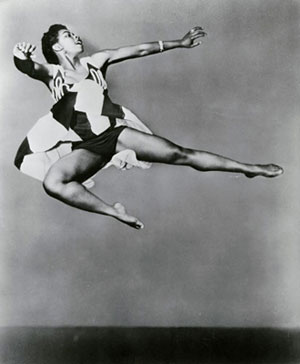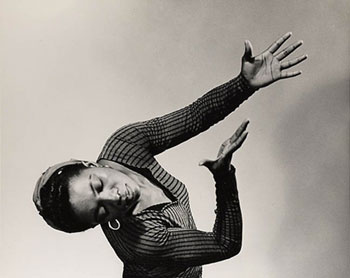Section 1 and 2: The Search for Identity through Movement

Pearl Primus’ The Negro Speaks of Rivers
Like Langston Hughes’ poem, Primus’s "The Negro Speaks of Rivers" is a meditation on the African diaspora. Primus’s dance evokes a sense of connection, pride, and strength among peoples of African descent. The students will identify the movements and gestures that help capture the choreographer’s ideas.
Classroom Activities
- Before coming to class students should have already read the chapter on Pearl Primus from "African-American Concert Dance: The Harlem Renaissance and Beyond," Langston Hughes’s poem, "The Negro Speaks of Rivers," and Pearl Primus’s "My Statement". The two shorter pieces might be read aloud in class by one or more students.
- Ask students for their impressions about Primus’s life in New York in the 1930 and 1940s. Primus was both from Trinidad and identified as an African-American. How would her experience be different than Graham’s?
- View Primus’s 1944 solo, "The Negro Speaks of Rivers."
Students should write down their initial impressions of the dance and answer the following:
- What kinds of movements did Primus use in order to capture the images in Hughes’s poem?
- What kinds of movements did Primus use to create her vision of an American identity?
- View "The Negro Speaks of Rivers" again using the Movement Analysis Worksheet. Ask students to identify spatial patterns (for example, straight line, circular, rectangular, lines at right angles), body shapes, and different movement qualities, i.e. light/strong, fast/slow, direct/indirect.
Student observations might be furthered through discussion or used as part of a writing exercise.
Discussion Questions
- Compare and contrast the two ways of observing dance—looking for movement in relationship to meaning and looking for movement elements (floor patterns, shapes, etc). How do these ways of seeing differ and lead you to different aspects of dance? How are they complimentary?
- Describe some of the images you found incorporating words from the Movement Analysis exercise.
- How is this dance like and different from Frontier?
- What are some of the dance movements and everyday gestures that we associate with African-American identity today?
- What are some of the ways that a single ethnic group’s movement patterns become a part of the lives of all Americans?

Assignment
- Research the Great Depression. Be sure to look at photographs taken during this period, for example images by photographers Walker Evans and Dorothea Lange. How would you describe the people in these photographs?
- Students might read Toni Morrison’s short novel, The Bluest Eye or another work by an African-American writer that deals with the unique problems of growing up black and female in America.
- Students might also bring in materials from popular culture—music videos, photographs—that illustrate how American identity has developed as an inter-ethnic identity.

